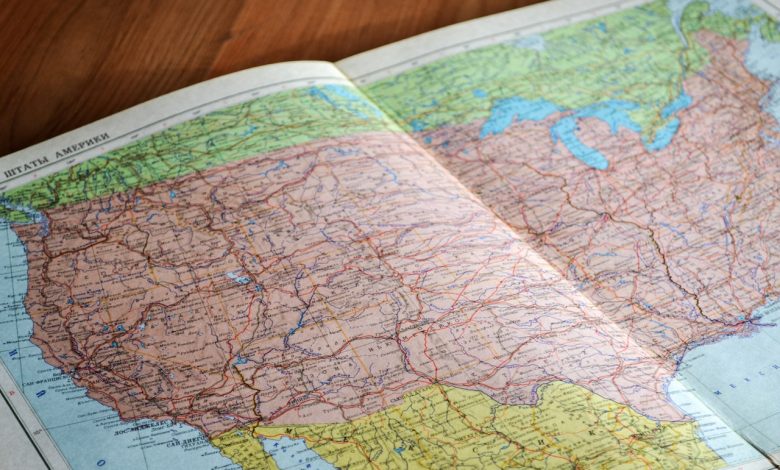
Studying in the United States is a dream for many international students. The diverse culture, world-renowned universities, and exciting opportunities make it an appealing destination. However, before you can start packing your bags, you need to tackle the U.S. student visa process. Don’t worry; it may seem like a maze, but with the right guidance, it can be a smooth journey. In this comprehensive guide, we’ll walk you through the process step by step, helping you fulfill your American educational aspirations. And, don’t forget to hire a good student visa attorney to help you through the process!
Understanding Visa Types
The first step to securing your U.S. student visa is understanding the different types available:
1. F-1 Visa
The F-1 visa is the most common choice for international students pursuing academic studies in the United States. It’s suitable for those attending colleges, universities, language schools, or other academic institutions.
2. J-1 Visa
The J-1 visa is for exchange visitors participating in programs that promote cultural exchange. If you’re part of a government-sponsored program, a research scholar, or a student in a specialized program, this might be your visa type.
3. M-1 Visa
The M-1 visa is designed for students pursuing vocational or non-academic programs. If you’re aiming to study at a technical or vocational school, consider this option.
The U.S. Student Visa Application Process
Now, let’s break down the application process into manageable steps:
Step 1: Get Accepted by a U.S. School
Before applying for a student visa, you must secure admission to a U.S. institution. This means completing all required academic and language proficiency tests, submitting your application, and receiving an acceptance letter.
Step 2: Pay the SEVIS Fee
SEVIS (Student and Exchange Visitor Information System) is a government database that tracks information about international students. You’ll need to pay a SEVIS fee before proceeding. You can do this online and will receive a receipt as proof of payment.
Step 3: Complete the DS-160 Form
Next, you’ll need to fill out the DS-160 form online. This form gathers essential information about your background, travel plans, and intended U.S. stay. Be honest and accurate when completing it.
Step 4: Schedule a Visa Interview
Once you’ve completed the DS-160 form, you’ll need to schedule an appointment for a visa interview at the nearest U.S. embassy or consulate. It’s advisable to book your interview well in advance, as appointment slots can fill up quickly, especially during peak admission periods.
Step 5: Gather Required Documents
Before your interview, gather the necessary documents, including:
- Your passport with a validity date at least six months beyond your intended stay in the U.S.
- A printed DS-160 confirmation page.
- A passport-sized photo that meets the U.S. visa photo requirements.
- Your SEVIS fee receipt.
- Proof of financial support (e.g., bank statements or a sponsor’s letter).
- Academic transcripts and diplomas.
- Your acceptance letter from a U.S. institution.
Step 6: Attend the Visa Interview
On the day of your interview, arrive well-prepared. Be sure to:
- Dress professionally.
- Bring all required documents.
- Answer the interviewer’s questions honestly and confidently.
- Be ready to explain your academic and career plans in the U.S.
Step 7: Pay the Visa Application Fee
Before or on the day of your interview, pay the visa application fee, which varies depending on your visa type.
Step 8: Wait for Visa Approval
If your visa interview goes well, you’ll receive your visa within a few days or weeks. Congratulations, you’re on your way to the U.S.!
Tips for a Successful Visa Interview
Visa interviews can be nerve-wracking, but with these tips, you can increase your chances of success:
- Be early: Arriving on time or even a bit early shows your commitment.
- Dress professionally: A neat appearance goes a long way.
- Be confident: Speak clearly and confidently during the interview.
- Know your program: Be prepared to discuss your chosen course of study and future career plans.
- Be honest: Consistency and honesty in your answers are crucial.
- Review your documents: Familiarize yourself with all the documents you’re required to bring.
Visa Denial and Reapplication
If your visa application is denied, don’t lose hope. The U.S. embassy or consulate will provide a reason for the denial. You may be able to address the issues and reapply. However, it’s essential to seek advice from the embassy or consulate before reattempting the process.
Maintaining Your Visa Status
Once you’ve obtained your U.S. student visa and arrived in the country, there are several crucial things to keep in mind to maintain your legal status:
Attend School Regularly
You must attend your classes regularly and make satisfactory academic progress. Falling behind or dropping out can jeopardize your visa status.
Stay Informed
Keep yourself informed about the rules and regulations that apply to your visa category. The U.S. government may change policies, and it’s your responsibility to stay up-to-date.
Work on Campus
F-1 visa holders are typically allowed to work on campus for up to 20 hours per week during the academic year and full-time during breaks. However, you must receive proper authorization from your school’s Designated School Official (DSO).
Obtain Optional Practical Training (OPT)
If you wish to gain practical experience related to your field of study, you can apply for Optional Practical Training (OPT) or STEM OPT Extension, which allows you to work off-campus for a specified period after graduation.
Conclusion
Navigating the U.S. student visa system may seem daunting, but with the right guidance and preparation, you can successfully fulfill your dream of studying in the United States. Remember to start the process early, gather all required documents, and be confident during your visa interview. Once you’re in the U.S., stay informed about your visa status requirements to ensure a smooth and enriching educational experience. Your American academic journey awaits!



